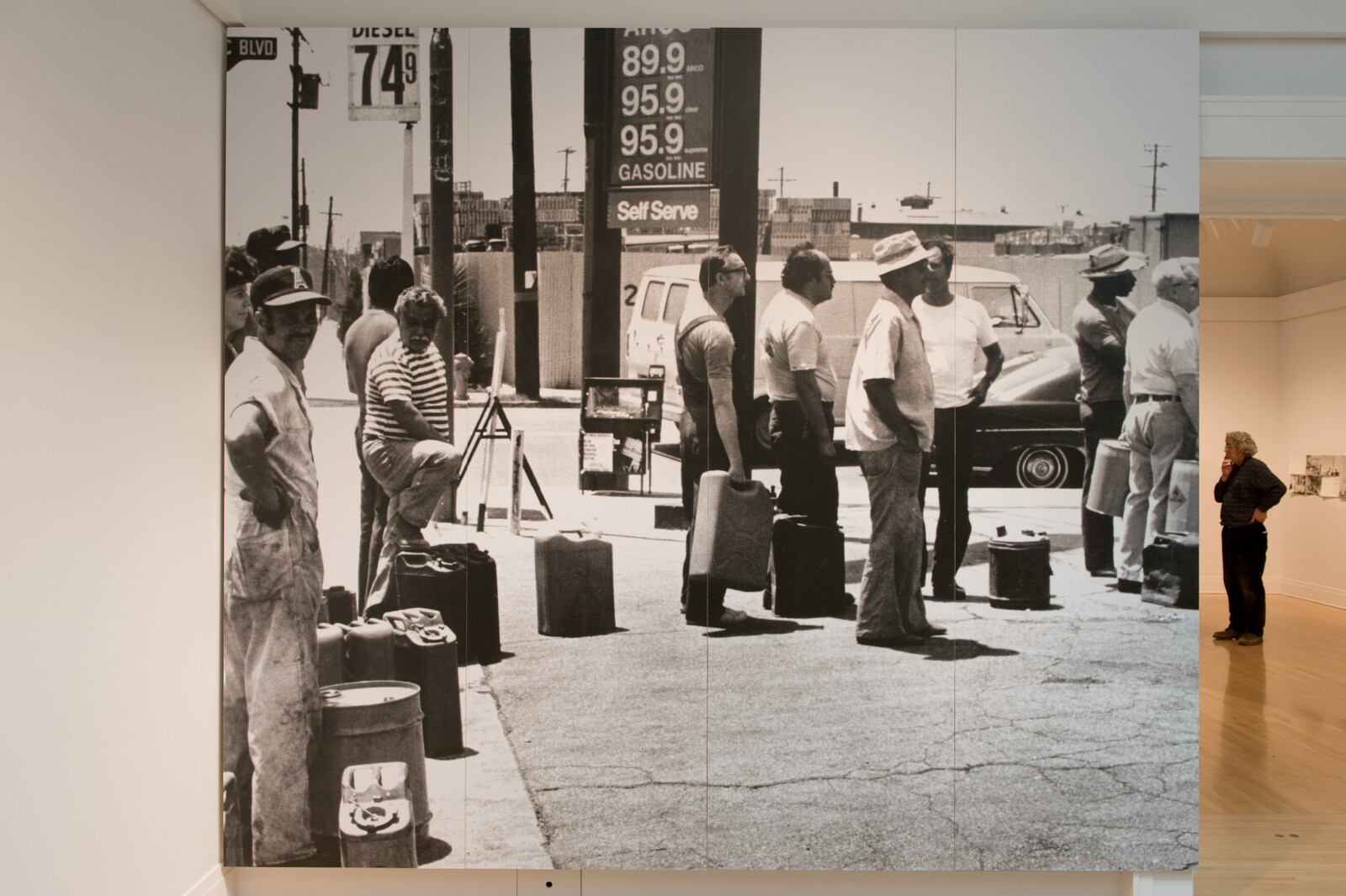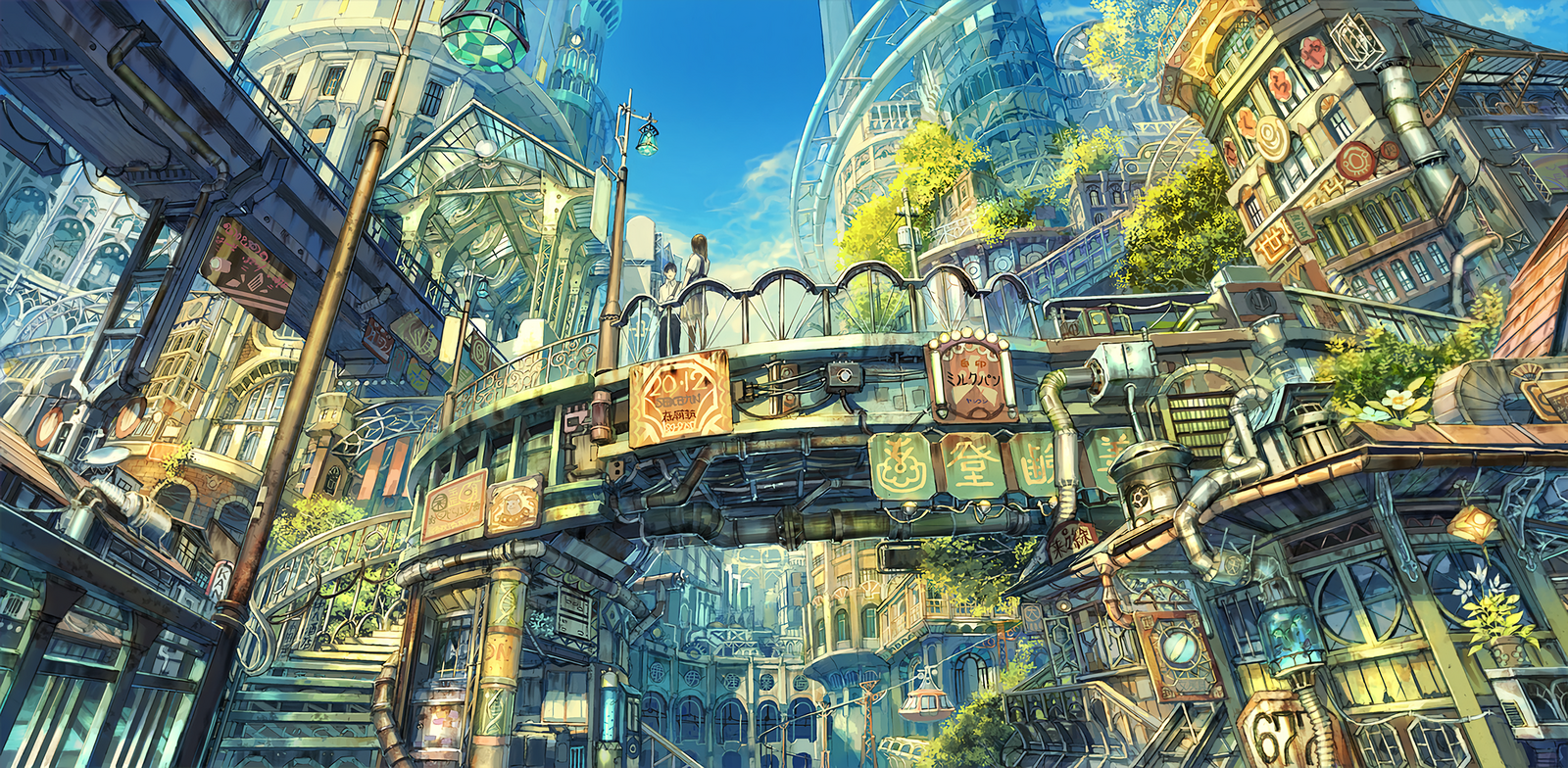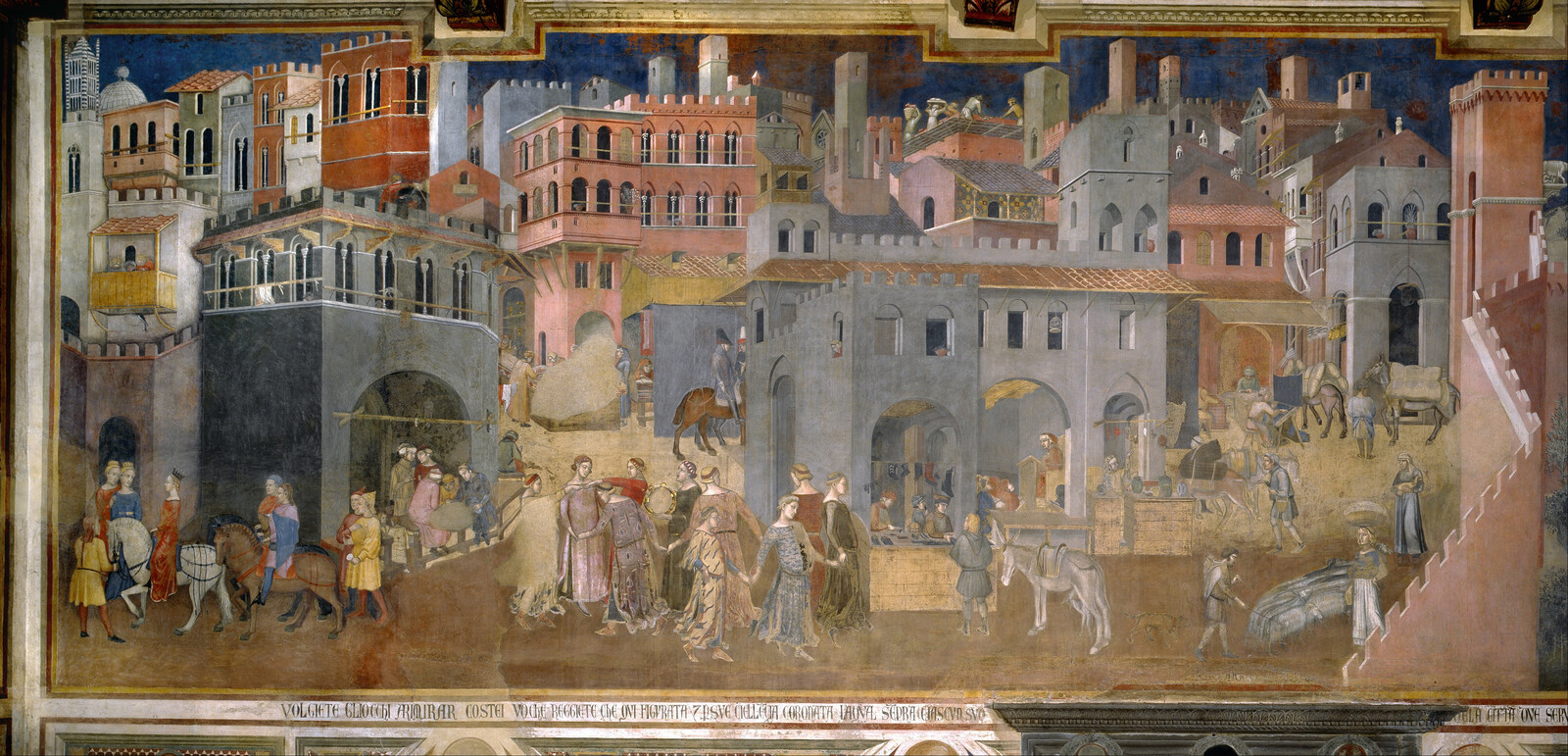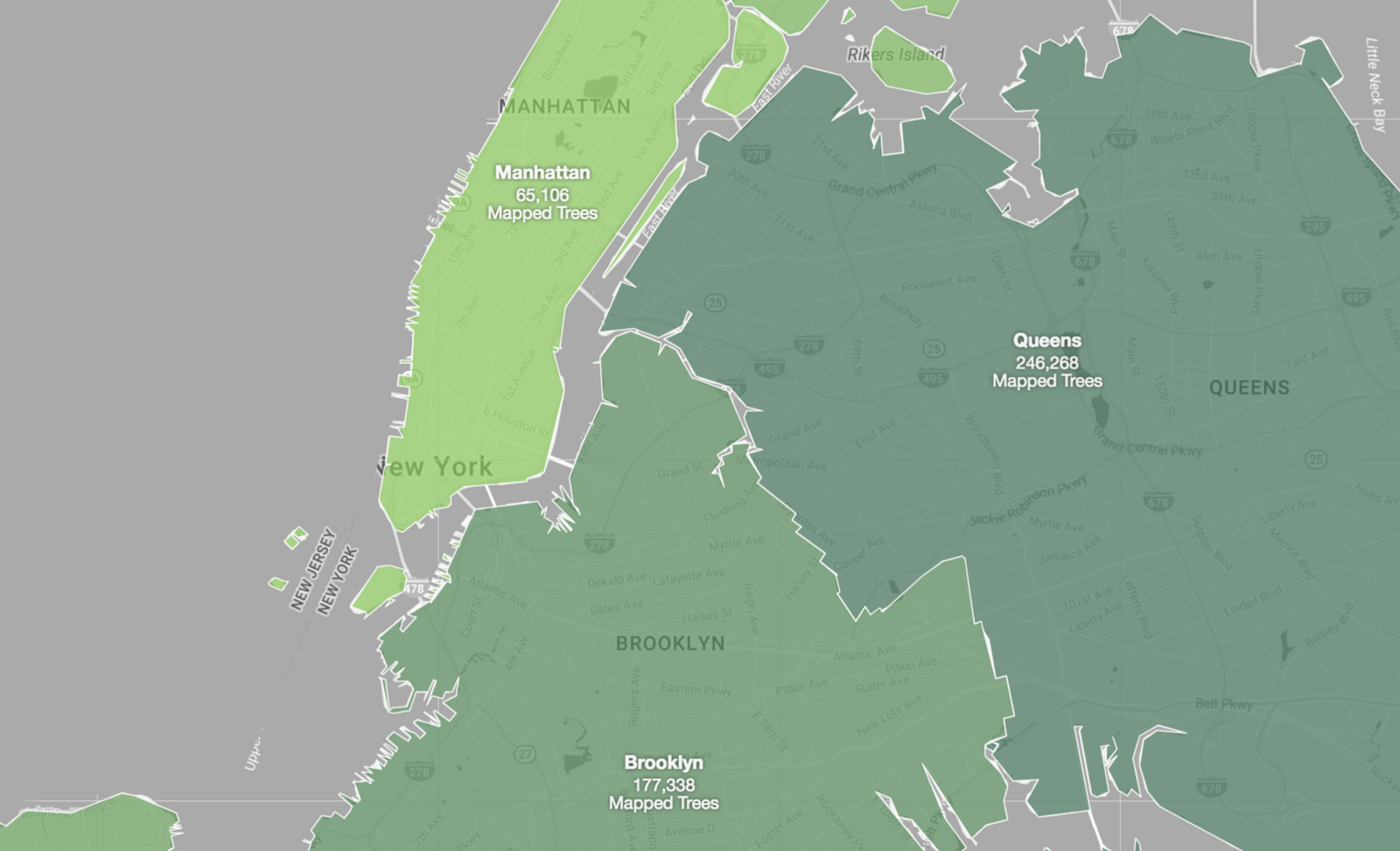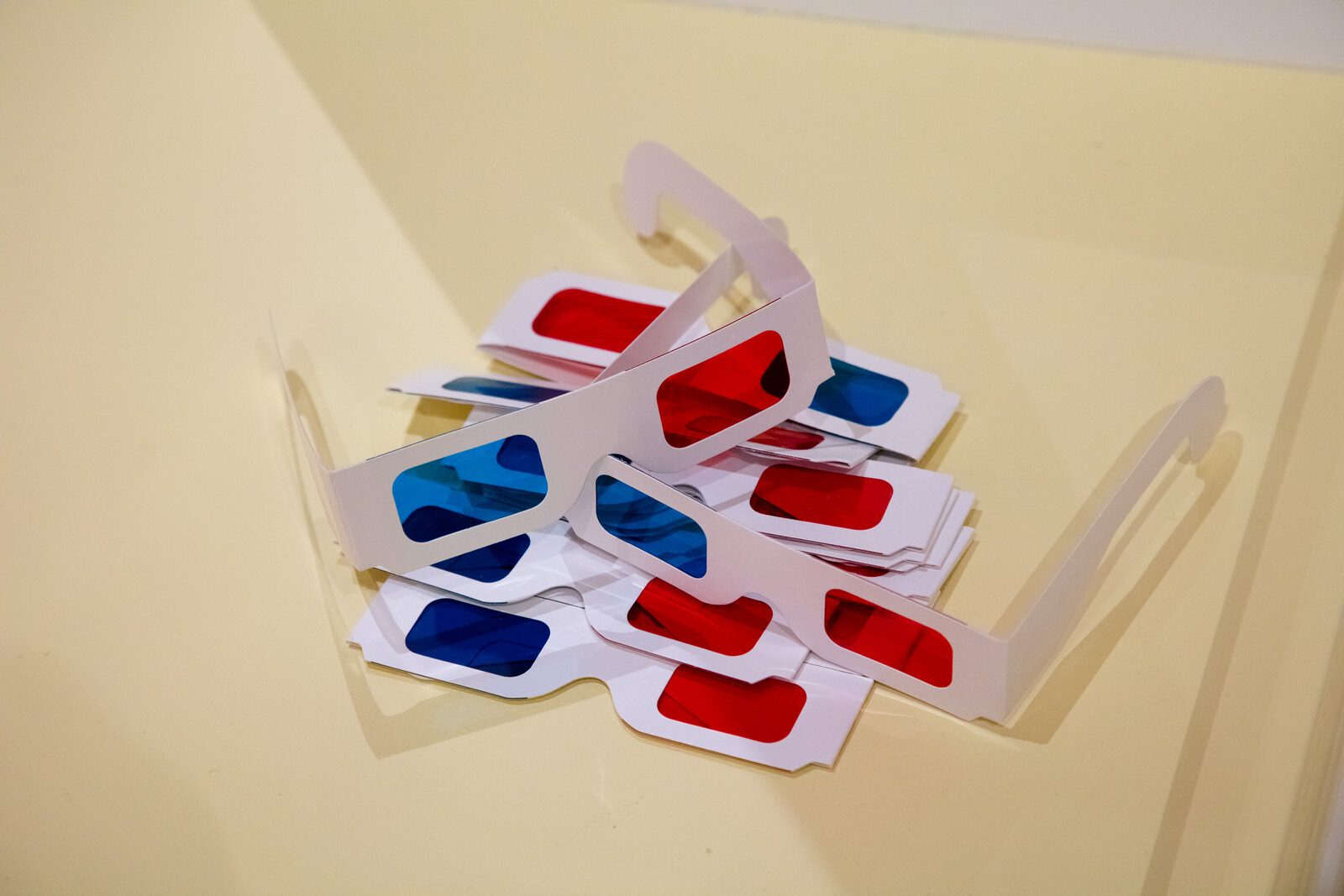The oil painting Nigeria in 1959 (1960) portrays three languid colonial officers seated with five African sergeants subdued yet standing at attention in the background. The piece recalls the 1959 Nigerian parliamentary election, a prelude to the nation’s independence the following year marking the official end of the British colonial rule. The hand and mind behind the painting, Demas Nwanna Nwoko, was awarded the Golden Lion for Lifetime Achievement at the 2023 Venice Architecture Biennale. In keeping with the artist’s criticism of slumbering European institutions and the African associates sustaining them, the theme for this year’s architecture biennale of Africa as the “laboratory of the future” rings hollow given the concentric rings of exclusivity and inaccessibility (beginning at the Italian Visa Facilitation Office) of the international showcase. However, the biennale’s recognition of the Nigerian “artist-designer,” an honor typically reserved for better-known architects and architectural theorists like Lina Bo Bardi, Kenneth Frampton, and Paulo Mendes da Rocha, brings Nwoko’s ideas and design approach to the fore, as well as those of the Zaria Art Society movement he was a part of as a student. Nwoko’s work, which spans from painting, carving, and sculpture, to theater set designs and architecture, is characterized by experimental tropical builds and a veneration of traditional West African craft, and stands as a prime twentieth-century example of decolonial and decarbonized African architecture.


Demas Nwoko, Nigeria in 1959, 1960. Oil on board, 53 × 38 in. Collection of the artist/New Culture Studios, Ibadan. Photo: Courtesy of the National Gallery of Art, Abuja, Nigeria. Source: New Orleans Museum of Art.
In 1935, Demas Nwoko began his life within the earthen walls of Idumuje Ugboko Palace in southeast Nigeria. Built by his grandfather, the courtyard structure would later be the site of the artist’s villa, which retained the existing adobe walls. As well as studying at Chelsea School of Art, Nwoko attended the Nigerian College of Art, Science, and Technology at Ahmadu Bello University in 1957. His involvement with the student-led Zaria Art Society, which was born out of the college, informed his design approach and material understanding. Colloquially known as the Zaria Rebels, the art and design movement challenged Western conventions and embraced local, artisanal, and post-colonial counter-imaginaries not taught in the university curriculum at the time. Notable Zaria Rebels such as Uche Okeke, Bruce Onobrekpeya, and Yusuf Grillo made great strides in illustration, painting, and sculpture. Originally a sculptor himself of teak and terracotta figurines, Nwoko went on to interpret this afro-modernist thought through an architectural medium.
The Zaria Rebel ideology is evident in the remote environments Nwoko worked in, typically rural and peri-urban sites, in an era and discipline absorbed with the burgeoning urban context. The constant dance between the built environment and the thriving tropical ecosystem it is situated within is reflected in Nwoko’s work through design elements such as under-seat ventilation awnings, fiberglass impluvium, and other unorthodox architectural choices. His Dominican Institute in Ibadan (1975), for instance, features sand-cast screens to catch the cool breeze and polished timber columns adorning the campus dining hall. These architectural elements were created in collaboration with indigenous craftspeople, who brought their material understanding to the site. But it was also informed by Nwoko’s artistic practice, which had long familiarized himself with the capabilities of alluvial materials such as the classical Nok terracotta forming techniques from the Jos-Plateau region of Central Nigeria.


Demas Nwoko, The Gift of Talents, mural, Tedder Hall, University of Ibadan, 1962. Photo by Obiora Udechukwu. Source: Postcolonial Modernism: Art and Decolonization in Twentieth-Century Nigeria by Chika Okeke-Agulu.
The Gift of the Talents (1961), a painted mural completed early in Nwoko’s career, once adorned the interior of Tedder Residential Hall at the University of Ibadan, where he worked as a lecturer of scenic design at the School of Drama. The mural blends Igbo folklore with the Christian tale, depicting the Earth goddess Ala as the wealthy master of the biblical parable. The mural marks the beginning of Nwoko’s theatrical style, which synthesized an indigenous artistic imagination with a vernacular material palette in places for the contemporary Nigerian such as chapels, masjids, and university lecture halls. Beyond folklore, the material influence of indigenous culture on the multiple religious structures and university buildings designed by Nwoko all challenge conventional (colonial) building culture. The original plans for the Church of the Daughters of Divine Love in Enugu from 1986, for instance, boast a perforated, catenary dome borrowed from the traditional cob houses of semi-arid Northern Cameroon. The adoption of a non-native edifice from the predominantly Muslim Musgum people to design a church in the tropical and fervently Catholic southeast of Nigeria might seem incongruous. However, upon reading Nwoko’s lamentations on the “cultural vacuum” formed under the weight of British colonialism, the motivation for certain design decisions such as this becomes clear.1 Filling this cultural void with an amalgam of diverse building traditions and material techniques pulled from the multitude of ethnicities and climatic zones along the Gulf of Guinea is an act of radical decolonization.

Akenzua Cultural Centre, Benin City, 1972–1995. Photograph by Joseph Conteh. Image courtesy of La Biennale di Venezia.

New Culture Studios, Oremeji, 1967–ongoing. Photograph by Joseph Conteh. Image Courtesy of La Biennale di Venezia.

New Culture Studios, Oremeji, 1967-ongoing. Photograph by Joseph Conteh. Image Courtesy of La Biennale di Venezia.

Demas Nwoko’s Private Villa, Idumuje Ugboko, 1976. Photograph by Joseph Conteh. Image Courtesy of La Biennale di Venezia.

The Dominican Institute and Chapel, Ibadan, 1970-75. Photograph by Joseph Conteh. Image Courtesy of La Biennale di Venezia.

The Dominican Institute and Chapel, Ibadan, 1970–75. Photograph by Joseph Conteh. Image Courtesy of La Biennale di Venezia.

New Culture Studios, Oremeji, 1967–ongoing. Photograph by Joseph Conteh. Image Courtesy of La Biennale di Venezia.

Akenzua Cultural Centre, Benin City, 1972–1995. Photograph by Joseph Conteh. Image Courtesy of La Biennale di Venezia.

Demas Nwoko’s Private Villa, Idumuje Ugboko, 1976. Photograph by Joseph Conteh. Image Courtesy of La Biennale di Venezia.

The Dominican Institute and Chapel, Ibadan, 1970–75. Photograph by Joseph Conteh. Image Courtesy of La Biennale di Venezia.

The Dominican Institute and Chapel, Ibadan, 1970-75. Photograph by Joseph Conteh. Image Courtesy of La Biennale di Venezia.

Akenzua Cultural Centre, Benin City, 1972–1995. Photograph by Joseph Conteh. Image Courtesy of La Biennale di Venezia.
Akenzua Cultural Centre, Benin City, 1972–1995. Photograph by Joseph Conteh. Image courtesy of La Biennale di Venezia.
Much of Nwoko’s work was built following the Biafran civil war (1967–1970). Within this era of post-war reconstruction, Nwoko designed spaces that were climate-responsive and culturally familiar. By drawing inspiration and references from many indigenous cultures, he sought to patch together a divided nation. And within his experimental process lay clues to a decarbonized future where sustainable and culturally responsive designs can flourish. The Oba Akenzua Cultural Centre (1993) in Benin serves as an example to future architects and artists to embrace their cultural and climatic contexts while shedding the remnants of colonial influence. Nwoko’s design uses timber, stone, and his self-developed “latcrete”—a composite of iron-rich laterite clay and cement to form an alternative to concrete that allows buildings to breathe in tropical environments. The use of latcrete increases thermal comfort and significantly reduces the carbon emission of the builds. Latcrete, which Nwoko claims to “[solve] localized problems within local resources,” sets a precedent for architects building on the Continent today: that structures can be built (and built well) with the same material their ancestors used.2
Nwoko’s journey from Zaria Rebel to Golden Lion recognizes his contribution to the (re)formation of African cultural identity through architecture. This deeply resonates with designers working today in contexts still reeling from the effects of colonialism and neocolonialism. In a recent interview, Nwoko claimed that “it would be too much to think that the people who brought us to this impoverished state are the ones who are going to volunteer to repair it.”3 The artist-designer’s contribution to spatial production expressed in diverse mediums—from theater sets to prefabricated roofs, mural painting, and furniture design—reminds us of the opportunities open to African and afro-diasporic practitioners that lie just beyond the professional pathways prescribed by tired Western institutions.
Demas Nwoko, The Impoverished Generation… The Poor Man’s Clean Rags: The Philosophy of an African Democracy (New Culture Publications, 1992).
Ibid., 74.
Rupert Bickersteth, “’Nothing has been built yet in Africa’ says Venice Golden Lion-winner Demas Nwoko,” Dezeen, June 21, 2023. See ➝.
Positions is an independent initiative of e-flux Architecture.
Category
Subject
This essay was commissioned as part of a collaboration between e-flux Architecture and alumni from the fourth cohort of New Architecture Writers to publish reviews of the 2023 Venice Architecture Biennale and Lesley Lokko’s 18th International Architecture Exhibition, “The Laboratory of the Future.”


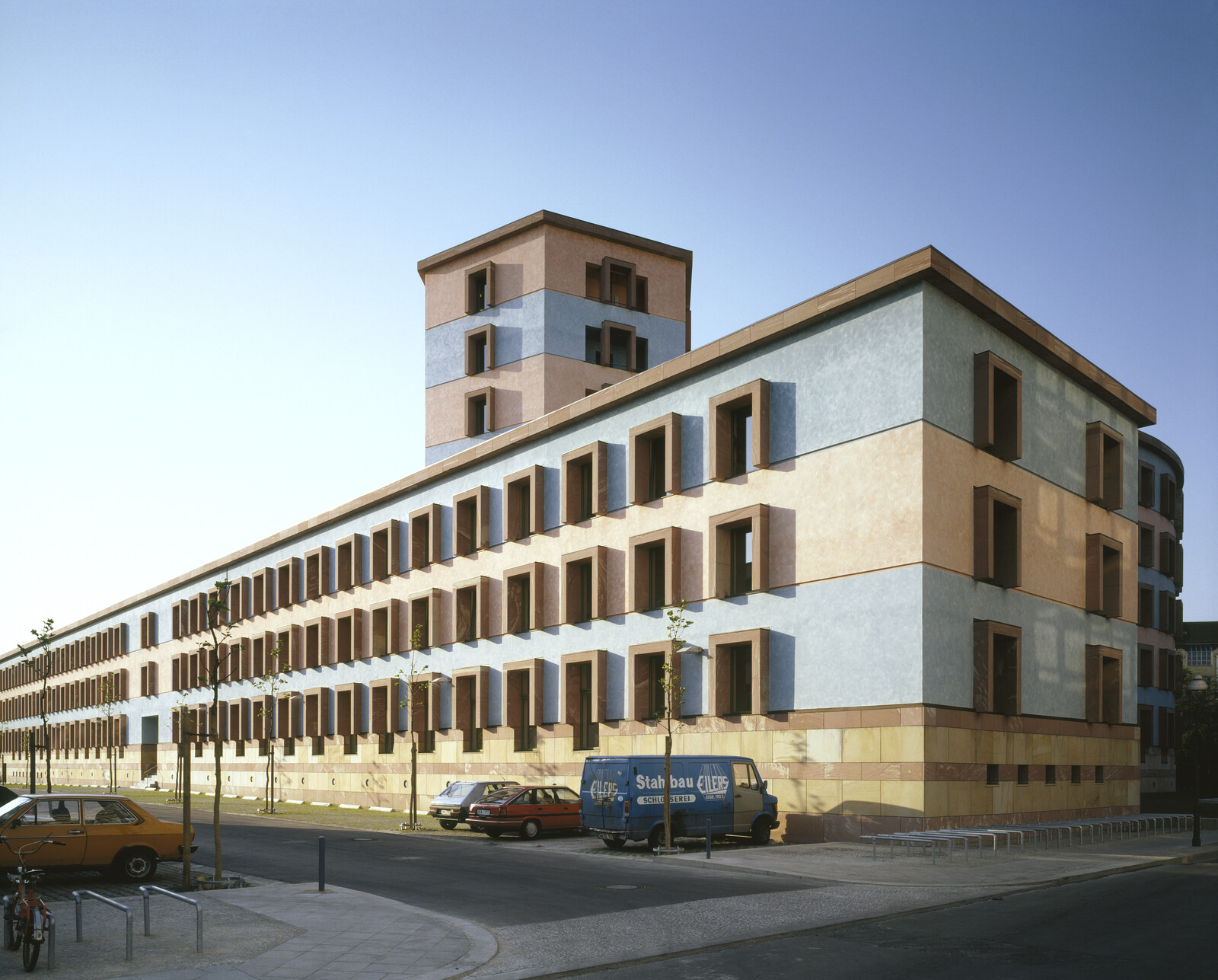

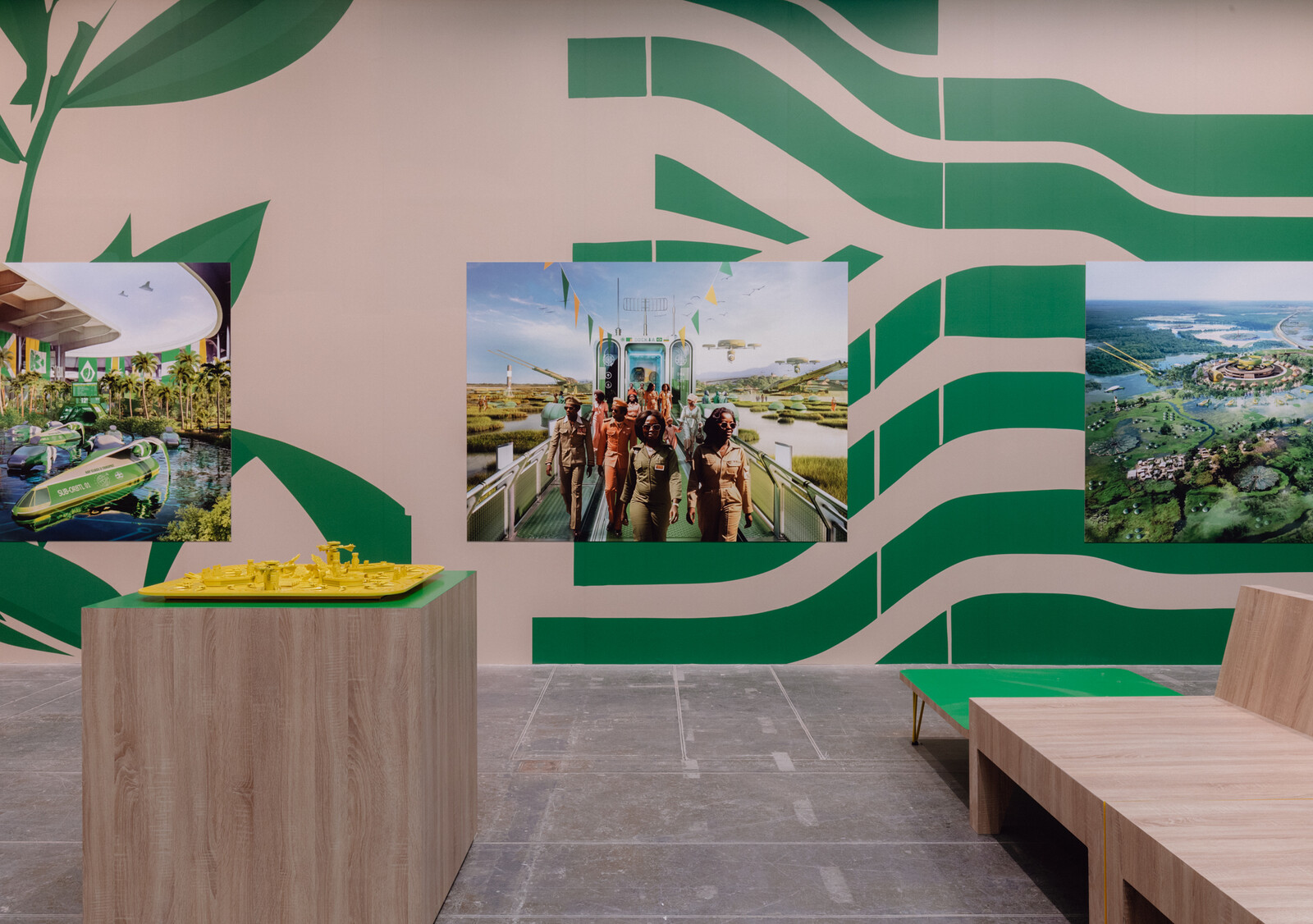




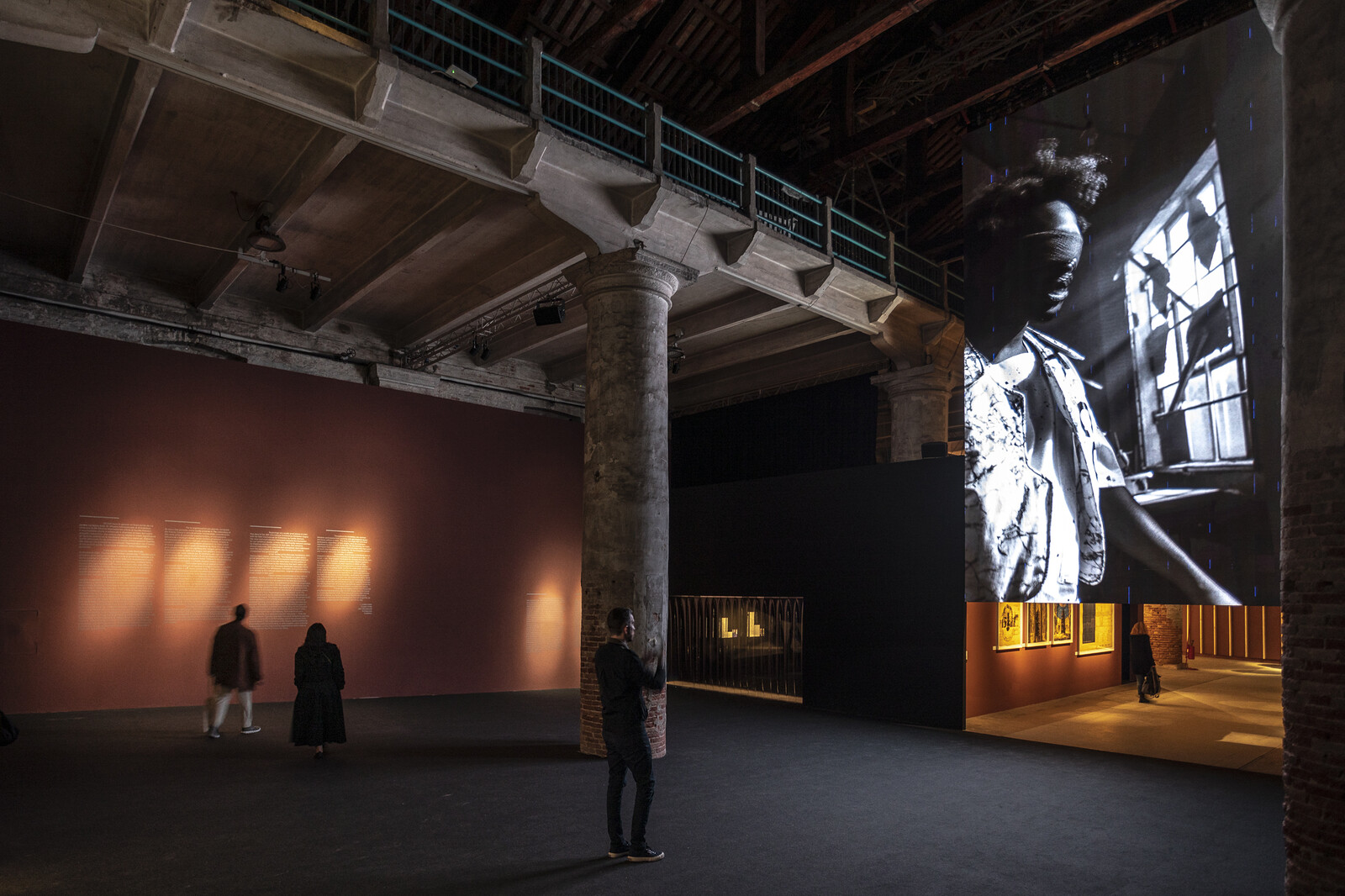







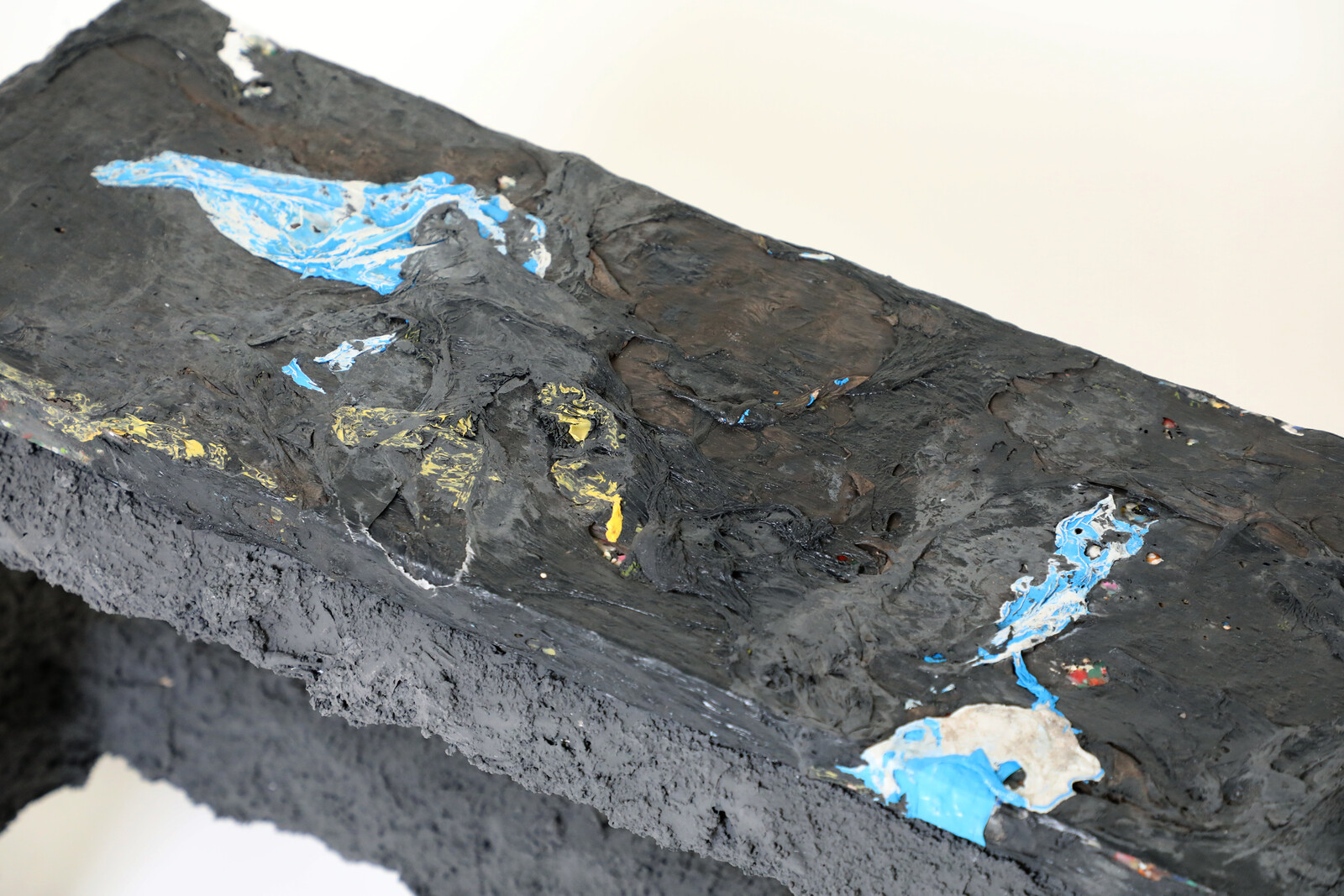





(2014).jpg,1600)











,-2003,-srgb.jpg,1600)





